
Explore this past museum exhibit right here online!
“We Stand on their Shoulders” | A History of Wisconsin Women and Voting
The right to vote is life-changing, but it does not come without struggle. Join us in celebrating the passage of the 19th Amendment and examining how strong leaders and passionate groups have gained long overdue rights and recognition for women in Wisconsin and around the nation.
This new exhibition marks the centennial of the 19th Amendment, which gave women the right to vote. It also shines a light on Wisconsin’s iconic women political leaders and connects the 19th Amendment to other struggles for rights and recognition that have been waged in the United States over the past century. Through the lens of Wisconsin suffragists, we learn about the national women’s suffrage movement. And by exploring issues of suffrage and civil rights in the latter half of the 20th century, we engage in a dialogue about diversity, inclusion, and human rights that is relevant today.
The exhibit draws on the depth and breadth of Wisconsin Historical Society collections and archives. Selected highlights from the exhibit are presented below.
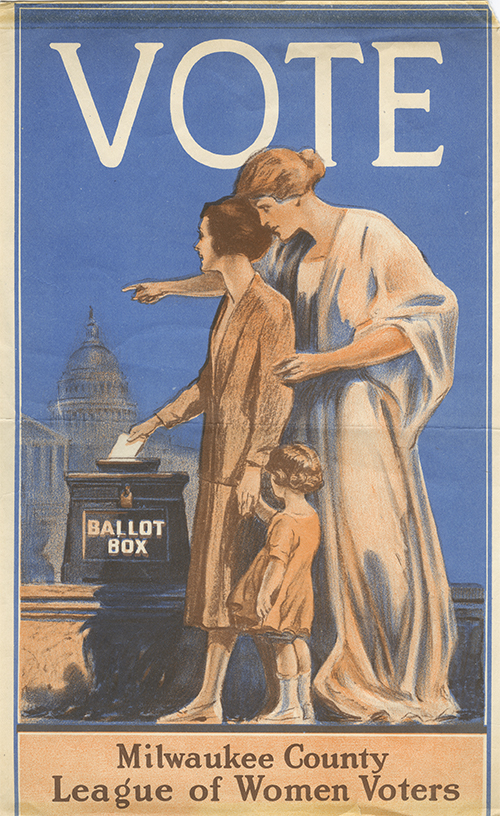
The Passage of the 19th Amendment
On August 26, 1920, the 19th Amendment went into effect and citizens of the United States could no longer be denied the right to vote on the basis of sex. Yet, the effort to achieve voting equality for women started decades earlier. Once the United States Congress passed a proposed constitutional amendment in 1919, each state—including Wisconsin—then had to follow a rigorous ratification procedure.
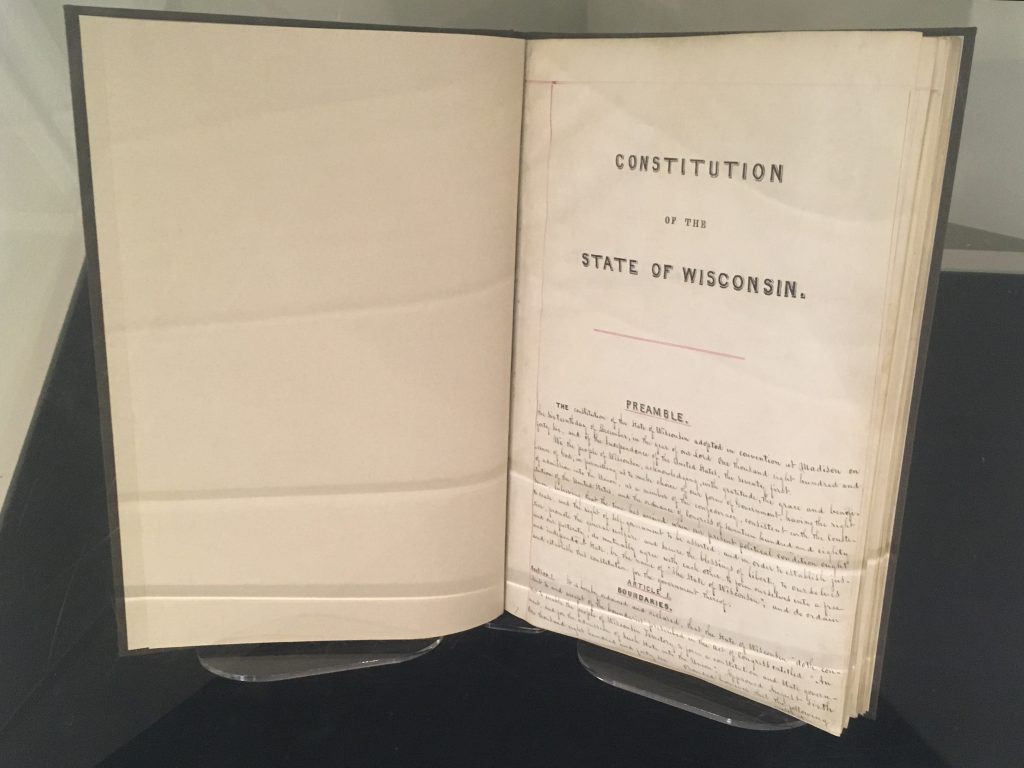
Wisconsin State Constitution, 1846
This is Wisconsin’s first constitution that was drafted—but did not pass—at the state’s first constitutional convention in 1846. A second convention was held two years later. The constitution drafted in 1848 remains our constitution today. However, it did not include women’s right to vote.
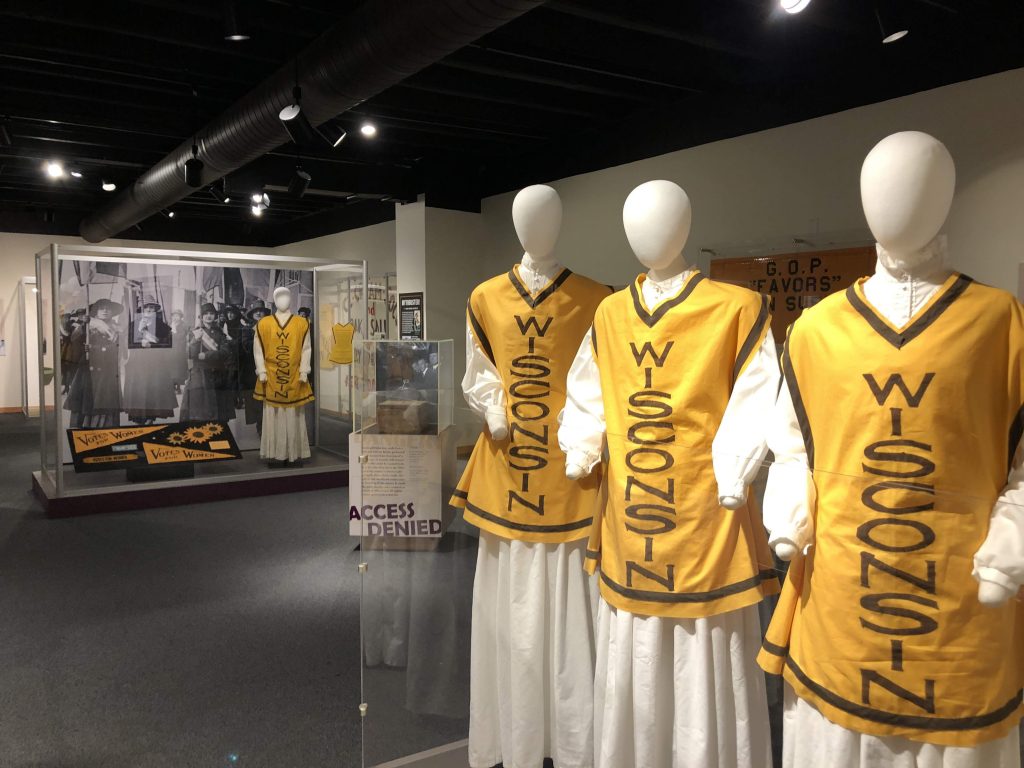
Replica Suffrage Tunics
These tunics are based on those that were worn by women demonstrating for women’s suffrage in a Chicago parade on June 7, 1916. Women from Wisconsin joined women’s suffrage activists from around the country to demonstrate the size of their movement during the 1916 Republican National Convention.

THE 19TH AMENDMENT
This official certification accompanied the proposed 19th Amendment that was sent from the US Congress to states for ratification on June 5, 1919.
Iconic Women Leaders of Wisconsin
The fight for women’s suffrage required the skills and talents of thousands of women across the country. Learn about just some of the Wisconsin women who played a pivotal role in obtaining the right to vote 100 years ago and some women who have since worked to advance the rights and recognition of women. Profiled women include Lavinia Goodell, Olympia Brown, Belle Case La Follette, Theodora Winton Youmans, Carrie Chapman Catt, Ada James, Doris Oiyotte Emery, Vel Phillips, Bernice Lindsay, and Andrea-Teresa “Tess” Arenas.
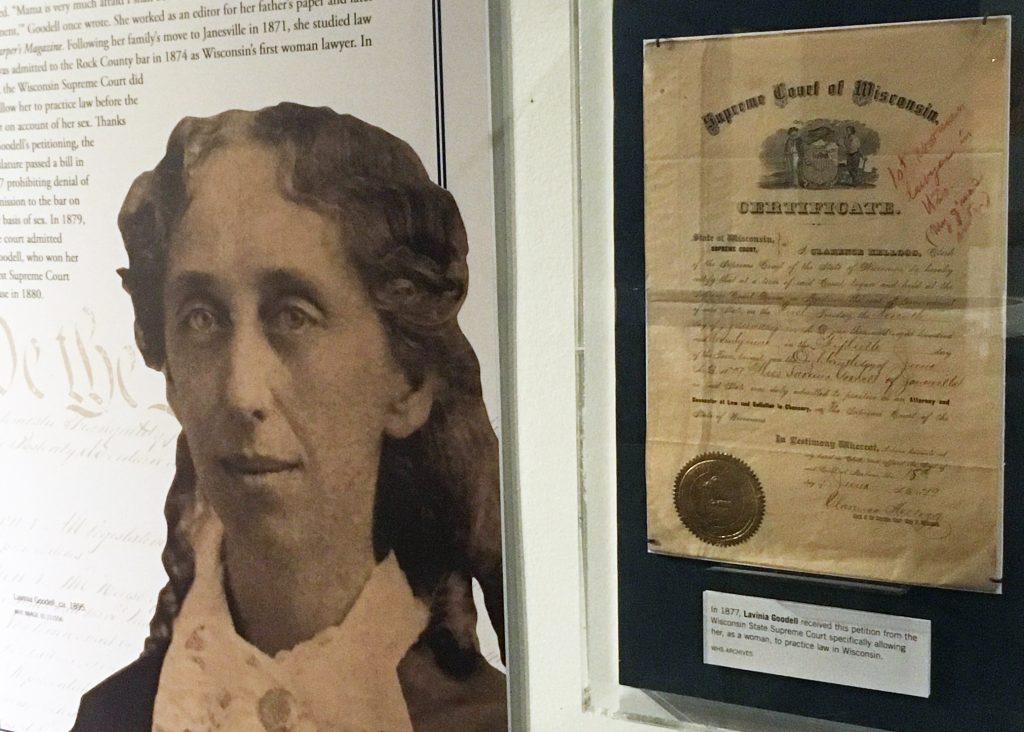
Lavinia Goodell
In 1877 Lavinia Goodell received this petition from the Wisconsin State Supreme Court which specifically allowed her, as a woman, to practice law in Wisconsin.
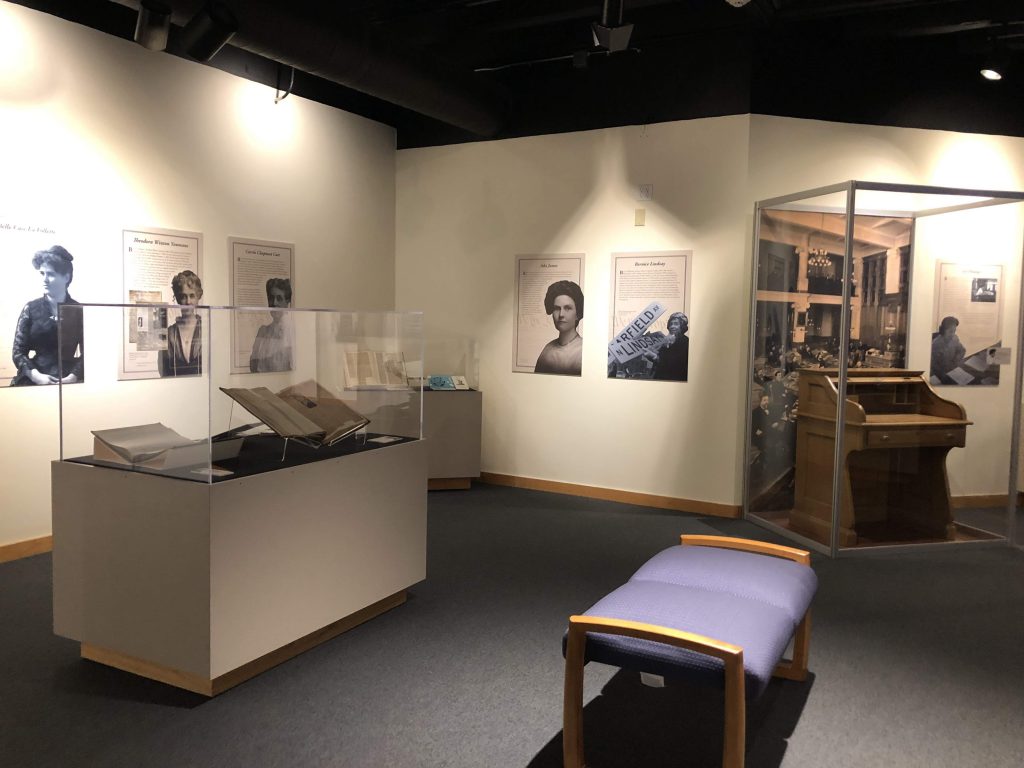
ICONIC WOMEN LEADERS
The exhibition highlights documents and artifacts from iconic women leaders of Wisconsin, including Olympia Brown, Theodora Winton Youmans, Belle Case La Follette, and Carrie Chapman Catt. On display is Vel Phillips’s desk from her time on the Milwaukee Common Council, 1956–late 1960s.
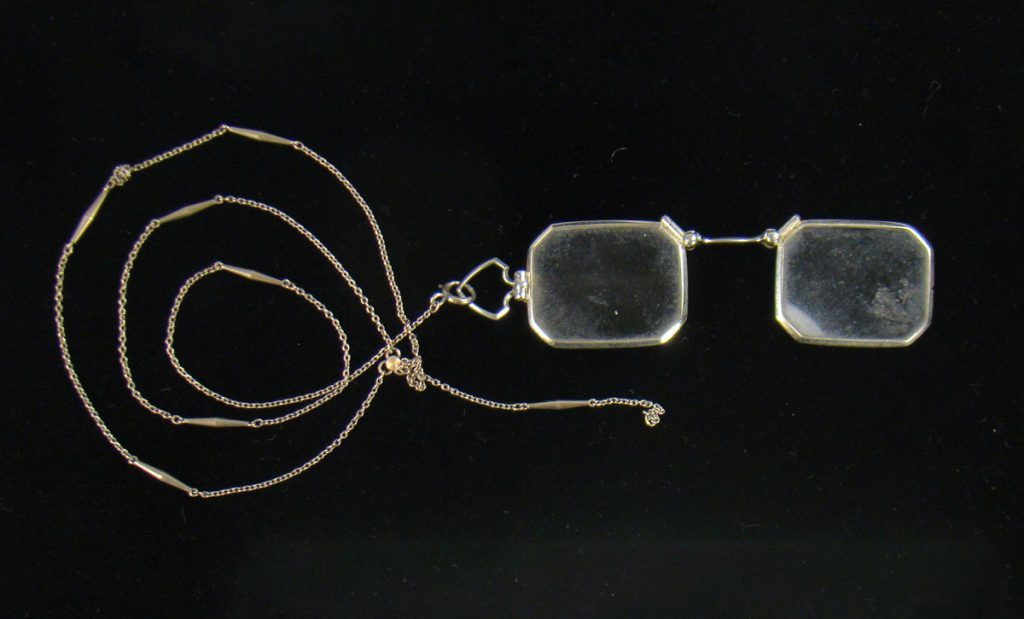
Belle Case La Follette
Belle Case La Follette was the first woman to graduate from law school in Wisconsin and an outspoken advocate for women’s right to vote. She used these eyeglasses around 1900-1920.
Continuing the Effort
The passage of the 19th Amendment was a watershed moment that future movements built upon, and the fight for voting rights continues. Today, questions surrounding citizenship, identification, and gerrymandering, among other issues, are being discussed. Generations of Americans have fought for access to the polls.
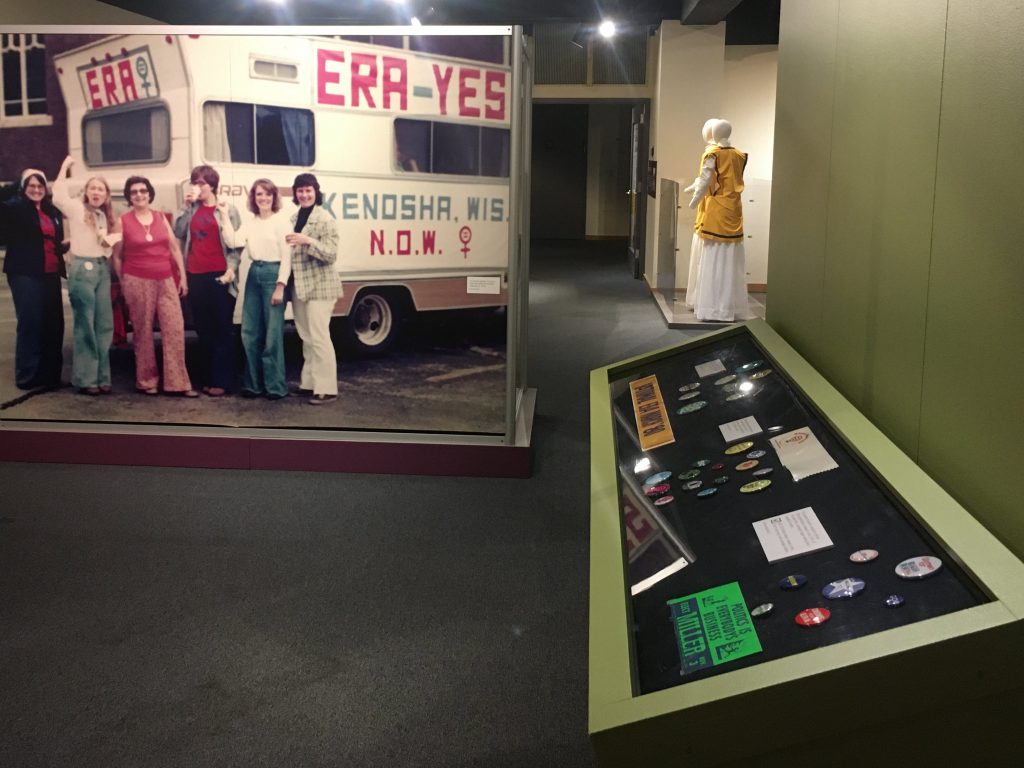
Campaign Buttons
A display of campaign buttons worn at marches and rallies during the 1970s and 1980s for a number of advocacy efforts, including the Equal Rights Amendment (ERA).
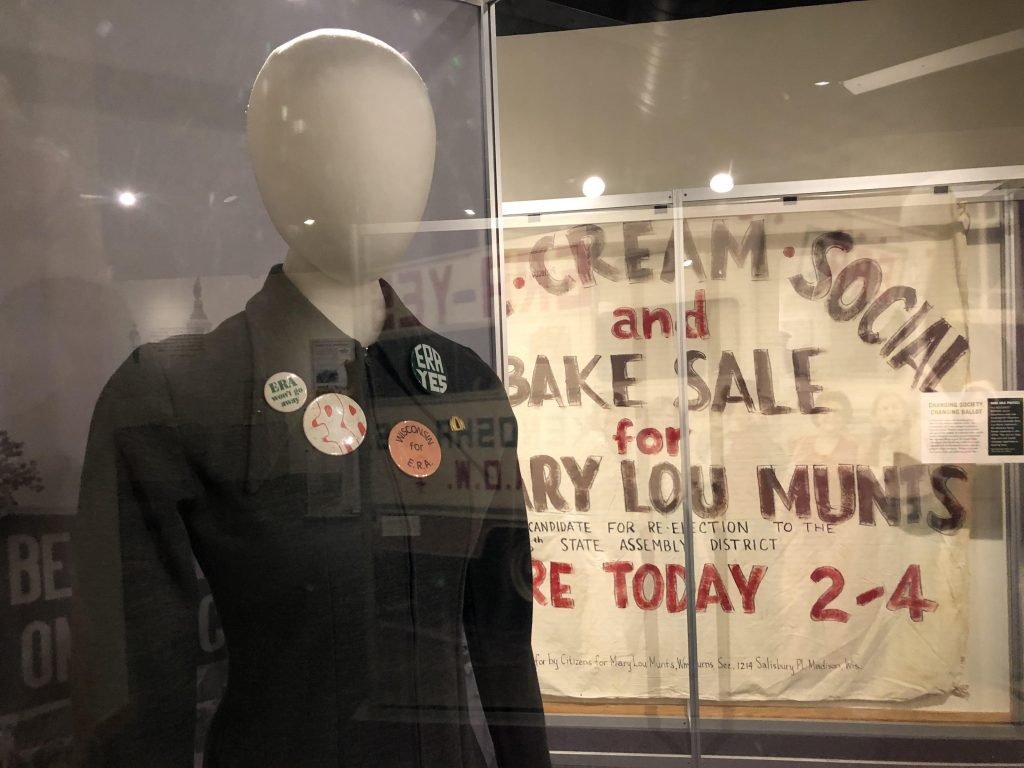
Continuing Battles
A display from the section of the exhibition on the continuing fight for voting rights. In the foreground is a mannequin wearing a pantsuit, ca. 1975, with buttons worn by supporters of the Equal Rights Amendment (ERA) at marches and rallies during the 1970s and 1980s. In the background is a bed sheet banner from the 1970s which advertises a bake sale fundraiser for Wisconsin Assembly candidate Mary Lou Munts.
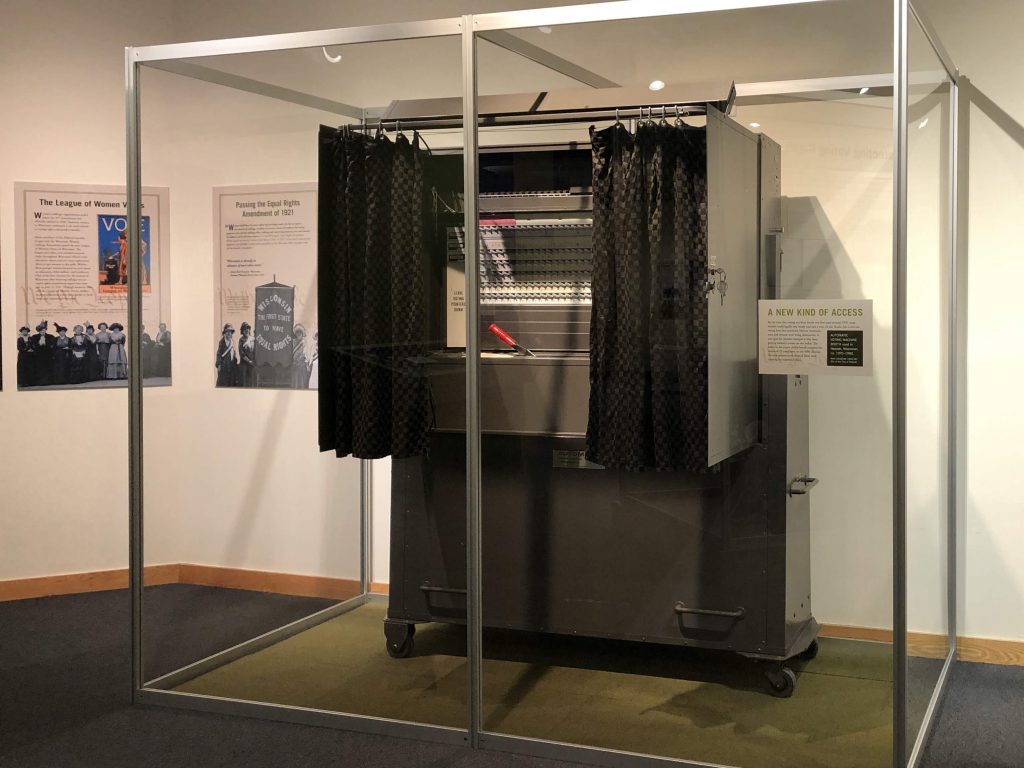
Voting Booth
A display from the section of the exhibition on the continuing fight for voting rights. On exhibit is an automatic voting machine booth used in Neenah, Wisconsin, ca. 1970–1990.
Virtual Walk Through of the Exhibit
For more resources on the Women’s Suffrage Movement in Wisconsin, click on the button below.


